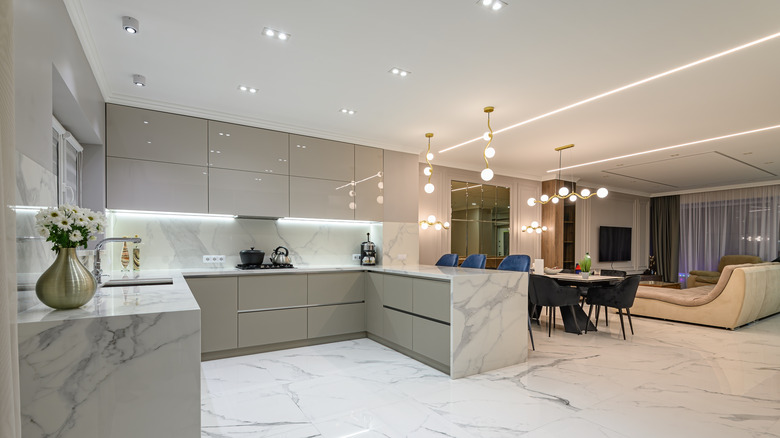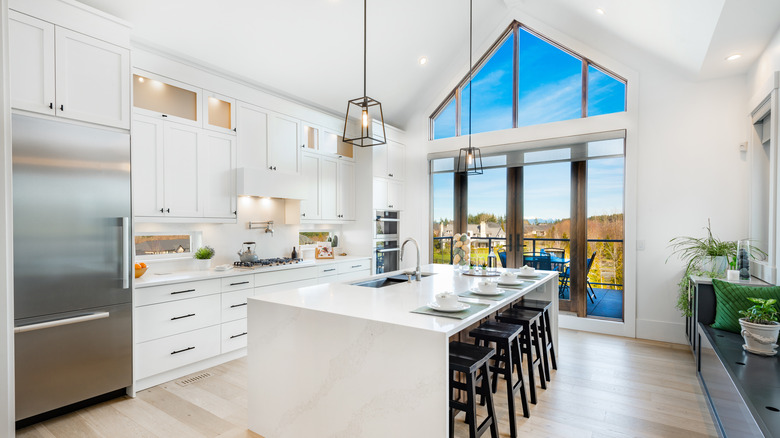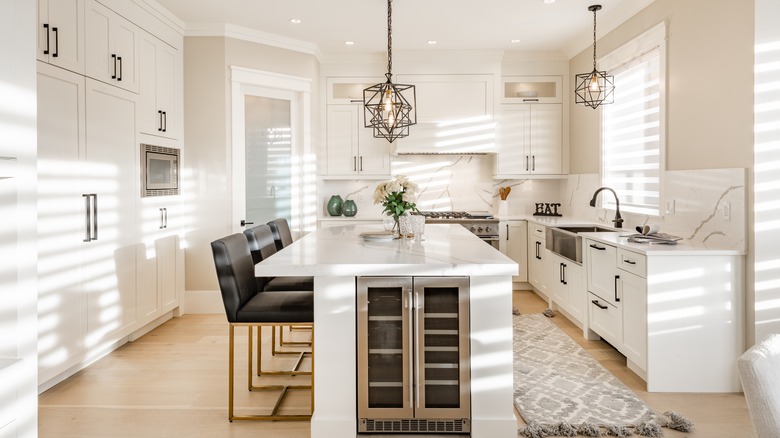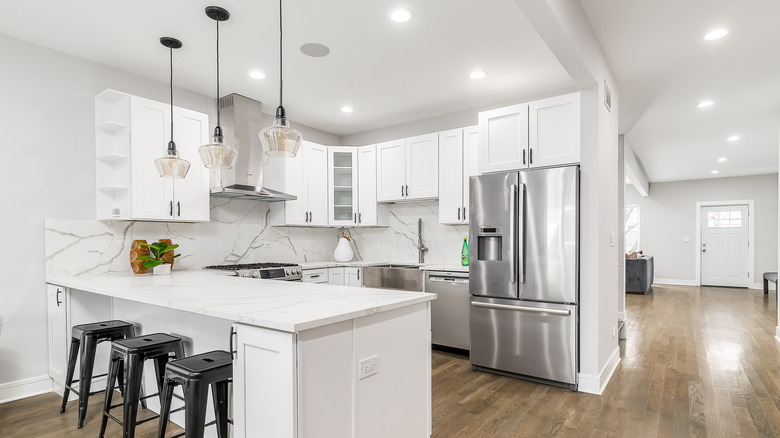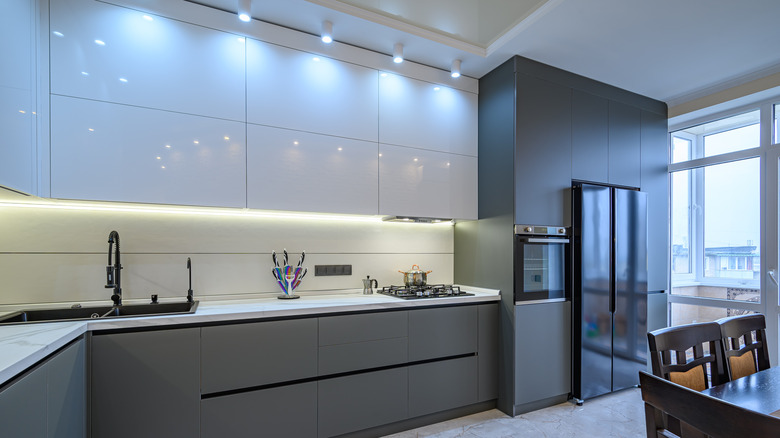Tips On How To Plan Your Kitchen's Lighting Layout
We may receive a commission on purchases made from links.
While layering lighting is important in every area of the home, it is especially crucial in the kitchen. This is because most homeowners do many tasks in this room, including entertaining guests, cooking meals, cleaning dishes, and eating snacks. "The kitchen is not only a working space in the home but also a gathering space. Good lighting can help the room function for all of its purposes," Sheva Knopfler, co-Founder of Lights.com, told Homes & Gardens.
When choosing the right lighting, first make a list of the tasks you most often complete in your kitchen. Then think about the types of fixtures you want, from pendants to wall sconces to chandeliers. Finally, consider the aesthetics of your fixtures, and choose ones that match the rest of your home's style. To create a plan for your space, draw the basic layout of your room on a piece of paper, then try out different lighting ideas, such as two versus three sconces above the island. When doing this, make sure you take into account the following four things.
Natural lighting
Before you begin layering with artificial lighting, first identify how much natural light your kitchen gets from any windows, skylights, and glass doors. Also, consider windows and doors in adjoining rooms, especially if you have an open floor plan. The sunlight that pours into your room will provide extra illumination during the day and may save you money on your energy bill since you won't have to turn on your overhead lights as often.
However, you should also think about how bright the kitchen will be at night, as you'll need enough lighting to make the space functional even when it's dark outside. Therefore, instead of relying on sunlight for extra brightness, determine whether or not the windows and doors are focal points in the space by asking yourself if these features draw the eye in and make a statement. If they are the center of attention, you can place wall sconces or pendants near them, highlighting their design features.
The three types of artificial lighting
When planning for artificial lighting in the kitchen, you'll need to know about the different types of lighting since all of them must be used to make your space bright enough. Ambient lighting may already be present in your space, as it's often brought in with recessed lights installed in the ceiling. These aren't meant to draw attention but are usually the foundation by which you can layer on more decorative or task-focused fixtures.
The second type is task lighting, which is especially important to help you complete chores like cooking and cleaning because not having enough brightness could make these things difficult. On the other hand, accent lighting is used as more of a decorative piece and often highlights different areas of the room. For instance, wall sconces on either side of a window would fall under this category, as they don't make tasks easier, but they do illuminate a design feature.
Pendants, sconces, and lamps
Task lighting is typically added above the island and the sink, but it could also be installed in other areas. Most homeowners choose to place pendants over the island, which can be grouped into a pair or a trio, depending on how long your surface is. Or, you could choose a chandelier or statement fixture above the island instead, like this farmhouse piece with five bulbs from Home Depot. A single pendant or wall sconce could also be placed over the sink to provide extra task lighting for preparing food and cleaning dishes. For a simple, modern look, choose a single glass pendant such as this one from Home Depot.
For accent lighting, most people utilize either wall sconces like these industrial-style options from Home Depot or table lamps. Wall sconces could be placed above windows, on either side of windows, or above shelving. Wherever you feel like the room is too dark or aesthetically boring, you could add these fixtures. Further, having these lights on dimmers is always a good idea, so you can change the feel of the room with the flick of a switch. Some also place a table lamp on their countertop, usually in the corner, to add a comfortable and cozy vibe.
Surface and cabinet lighting
Finally, many homeowners include lighting above or beneath things like surfaces and cabinets, illuminating these often-forgotten areas. In kitchens with cabinets that don't touch the ceiling, placing lights above them can be a great way to provide more ambient lighting and can be the perfect option for a nightlight. These dim lights are often added underneath cabinets, islands, and open shelving.
When choosing the right fixtures, the best types are those that are controlled with a remote, as they're typically placed in hard-to-reach areas. Most are battery-operated or rechargeable and can either be LED strips (like these from Amazon) or round puck lights (such as these on Amazon). Both options are easy to install anywhere in the kitchen. There are also color-changing and dimmable fixtures, which will provide your space with lots of different vibes. While unnecessary, this final step adds an extra layer to your space, making it much more appealing.
